Hemlock tanning, 19th century tanning, staining, leather, bark
This is a large page and is slow to load please be patient. I have tried to keep the pictures large for details.
Hemlock Tanned Leather
This page is for the color pictures to an article I wrote on hemlock tanned leather published in the Company of Military Historian Journal Spring 2005 issue.
The text below is a small part of the article and I would suggest that you read the whole article.
Most of us know that the use of leather in the construction of weapons and equipment for warfare dates back thousands of years to the earliest days of man. However, you may not know that the process of tanning the raw hides of animals into leather using bark and other vegetable materials remained remarkably the same until only about one hundred fifty years ago. It was not until the late 19th century that significant industrial changes and a natural calamity forever changed the methods, quality and even appearance of leather. Today, much of the traditional tanning methods are largely forgotten even by commercial leather producers. More significantly for Civil War historians and collectors, our knowledge of war time leather manufacturing, the considerable problems leather tanning and dyeing wrought upon the Federal Ordnance Bureau and the tremendous effect on today’s artifacts is also largely unknown. That is, until now.
In the mid-19th century the tanning processes were achieved by repeated soakings of the animal hide in the bark from trees mixed with other ingredients which generate an acidic chemical reaction that slowly turns the hides into leather. The “tannin” found in the bark is the central ingredient that preserves the hide- first by stopping natural decay then leaving the leather both flexible yet durable enough for extended use. The bark taken from Chestnut Oak and Hemlock trees were the two most commonly used by American tanners of the time. Chestnut Oak was mandated by the Federal War Department during the war because of its more acidic nature which aided the tanning process but more importantly, for its ability to hold the black leather dyes. It remained the most popular for only a short time after the war until significant industrial changes gradually replaced it and finally a natural blight in 1904 virtually wiped out the Chestnut Oak tree in America. The use of hemlock tree bark was also a big part of the mid-19th century commercial leather tanning business. 1. However, one of the more obscure aspects of war time military leather production was the peculiar problems that the use of Hemlock tanning caused the Federal Ordnance Department.
Figure 1. Bark removed from trees, stacked and ready for drying. After drying it would be ground into powder for use in the tanning process.

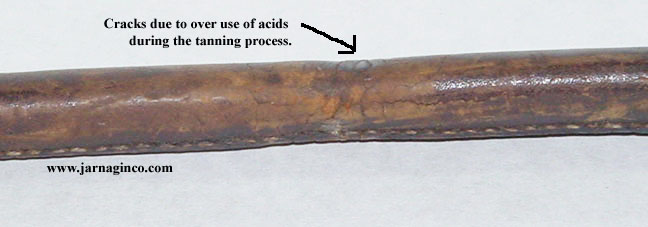
Figures 2A & B. Hemlock tanned 1859 pattern two rivet bayonet scabbard. Note acid damage in bottom photo.
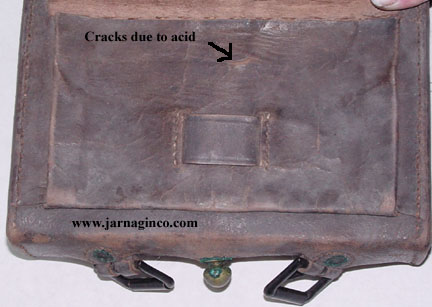
Figure 3: Hemlock tanned Watertown Arsenal cartridge box. Note cracks in leather due to acid damage.
Thanks to Fred Gaede for the use of these pictures.
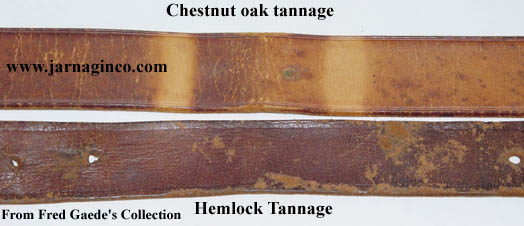
Figure 4: Top photo is of a chestnut oak tanned musket sling. Bottom is a hemlock tanned musket sling with a “stained” finish
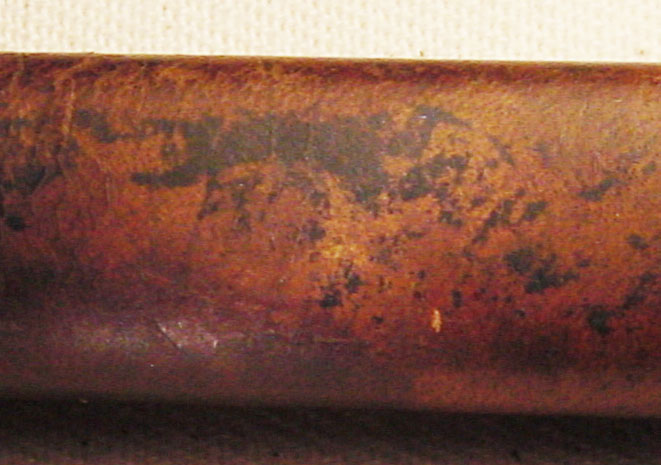
Figure 5: Close up of a hemlock tanned pattern of 1859 bayonet scabbard with what’s left of lamp black finish applied to the grain surface. The remains of this type of finish give it a 3-D appearance.
Figure 6: Photos of two 1864 dated Watertown Arsenal cartridge boxes side by side. The box on the left is Chestnut Oak tanned and still retains its dark black dye finish. The one on right is Hemlock tanned that has turned its signature brown. Fading on Hemlock leather will result regardless of the finish applied to the leather.
Here are the few extra pictures of the different tannage on the musket slings. The top one is an oak tanned and you can see from where the loops sat that the color did not change from what it looked like when the sling was new. The second one is of the same slings but a back view.
Thanks to Fred Gaede for the use of these pictures.

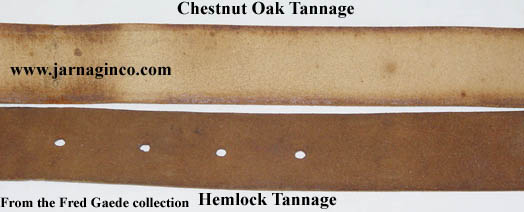
This shows skiving marks from where the leather was cut down the thickness of the leather.
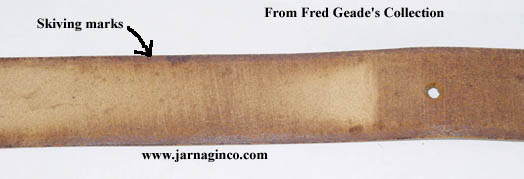
In Order to get a clear idea of what the true color of Hemlock bark was I found some hemlock and chestnut oak barks and did a re-tan. The re-tan gave me a clear idea of what the color was of these barks would have yielded during the 1860's, when they were both at their hay day as far as use in the tanning industry.
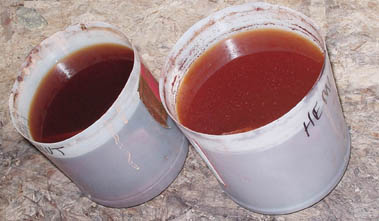
Ooze-mixture of bark and water
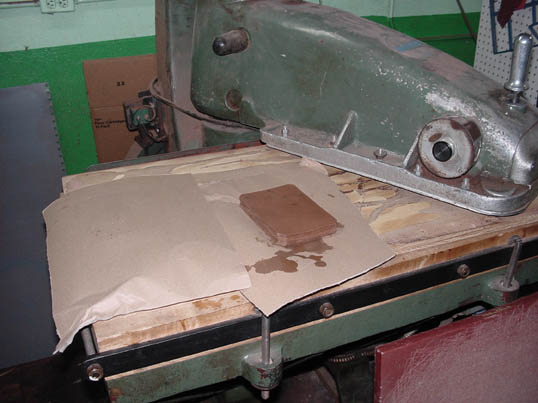
After the leather came out of the ooze and right before pressing; this removes extra water.
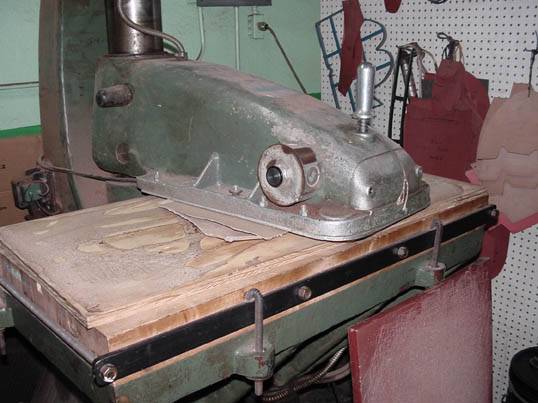
Pressing operation
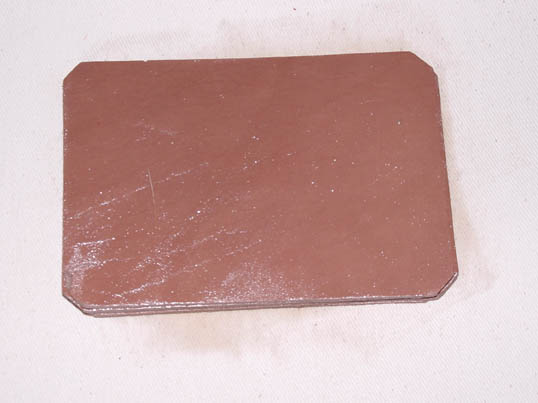
Curried
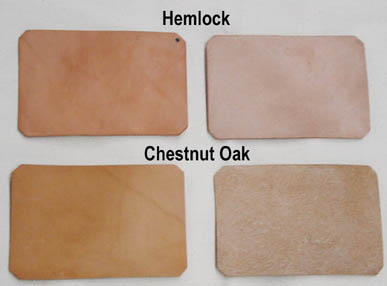
Samples after finishing the currying process.
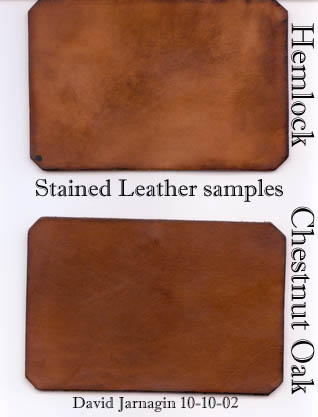
Stained Leather samples For more information on Stained leather please follow this link.
Links
Leather definition index - This page contains more information on leather tanning from the 1800's
The next two links are information page about how to care for leather.
Leather Preservation for leather tanned before 1890
Leather Preservation for New leather
And He said unto me, My grace is sufficient for thee: for my strength is made perfect in weakness. Most gladly therefore will I rather glory in my infirmities, that the power of Christ may rest upon me. Therefore I take pleasure in infirmities, in reproaches, in necessities, in persecutions, in distresses for Christ's sake: for when I am weak, then am I strong.